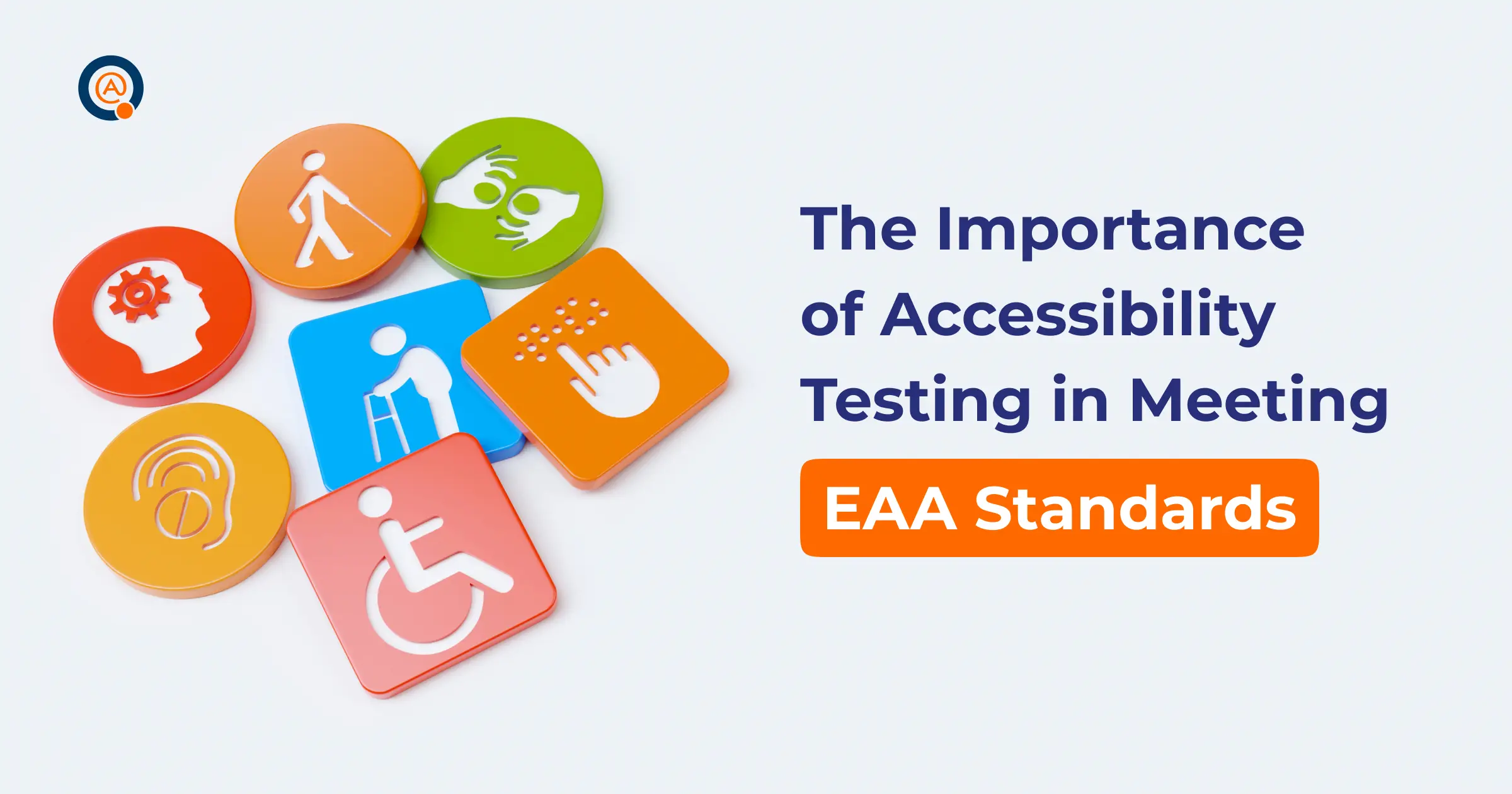- QATestLab Blog >
- QA Basics >
- Types of Software Testing >
- Accessibility Testing >
- The Importance of Accessibility Testing in Meeting EAA Standards
The Importance of Accessibility Testing in Meeting EAA Standards

The European Accessibility Act (EAA) has come into force, setting new digital accessibility requirements across the EU. Accessibility testing is essential as businesses offering mobile apps, telecom platforms, and digital services must ensure their products are accessible to all users, including those with disabilities, following the June 2025 compliance deadline.
This article outlines the EAA’s key requirements and highlights the role of accessibility testing in helping businesses meet these obligations effectively.
What Does the EAA Require?
The EAA sets unified accessibility standards across EU member states. It applies to online shopping, banking, telecommunications, public transport, and media sectors, covering EU-based and international businesses providing digital services to EU consumers.
Organizations must ensure that websites, mobile applications, ATMs, ticketing machines, and other digital interfaces are functional, understandable, and usable by people with disabilities.
For example, a mobile banking app should allow screen reader users to access key functions like checking balances or completing payments.
For companies working in mobile ecosystems, accessibility means adapting interfaces for smaller screens, using gesture-based controls and voice commands, and ensuring compatibility with mobile assistive technologies such as TalkBack and VoiceOver.
Why Accessibility Testing Matters
Accessibility testing plays a key role in helping businesses meet EAA standards and improve the usability of their digital products. It supports compliance by reducing legal and operational risks and enhancing the user experience. Testing helps teams detect and resolve barriers that prevent people with disabilities from using digital services effectively.
For example, optimizing tap targets and simplifying menu structures can enhance the experience for users with motor impairments, those using mobile apps in motion, and those with limited connectivity.
A well-integrated accessibility testing strategy supports cleaner UI design, better navigation, and stronger user retention, benefiting all users, not just those with specific needs.
Choosing the Right Approach: Automated vs Manual Accessibility Testing
Effective accessibility testing combines automated tools and manual methods. Each serves a distinct purpose:
- Automated testing is fast and scalable. It can detect frequent issues, such as missing alt text, incorrect heading structures, or low color contrast.
- Manual testing focuses on real-life usability. It evaluates how digital products perform when accessed through assistive technologies such as screen readers, keyboard navigation (where supported), or voice control.
Both approaches are essential. Automation efficiently covers technical errors, while manual testing validates the actual user experience.
At QATestLab, we adopt a combined approach, leveraging the strengths of automated and manual testing to ensure a comprehensive evaluation.

The Business Value of Accessibility
Accessibility testing delivers value beyond compliance:
- Broadens access to underserved audiences, including over 135 million people in the EU with some form of disability. [1]
- Minimizes rework by catching accessibility issues early in the platform’s lifecycle.
- Enhances UX, leading to stronger user engagement and retention.
- Reinforces brand reputation in markets where accessibility is becoming a standard expectation.
Accessibility is becoming a baseline requirement for product quality. People interact with services in different contexts — on the move, with limited connectivity, or using assistive technologies. Designing with these realities helps ensure digital products remain practical, usable, and relevant across various situations.
Conclusion
The European Accessibility Act introduces precise requirements for digital accessibility across the EU. As the compliance deadline approaches, businesses are expected to review and improve the accessibility of their digital services.
Accessibility testing helps address potential gaps early and brings broader benefits, from meeting legal obligations to improving user experience and building more resilient digital products. Organizations that take action now will be better positioned to respond to evolving user needs, adapt to regulatory changes, and keep pace with technological progress.
Want to discuss your product’s accessibility? Contact us — we’re here to help make your digital experience more inclusive for everyone.

Sources
Learn more from QATestLab
Related Posts:
- European Accessibility Act: What It Means for Your Business and How to Get Ready
- E-Show Madrid 2025: Accessibility as a Key Challenge
- Automation, AI Testing, and Accessibility: Key Trends from VDS 2025
About Article Author
view more articles





